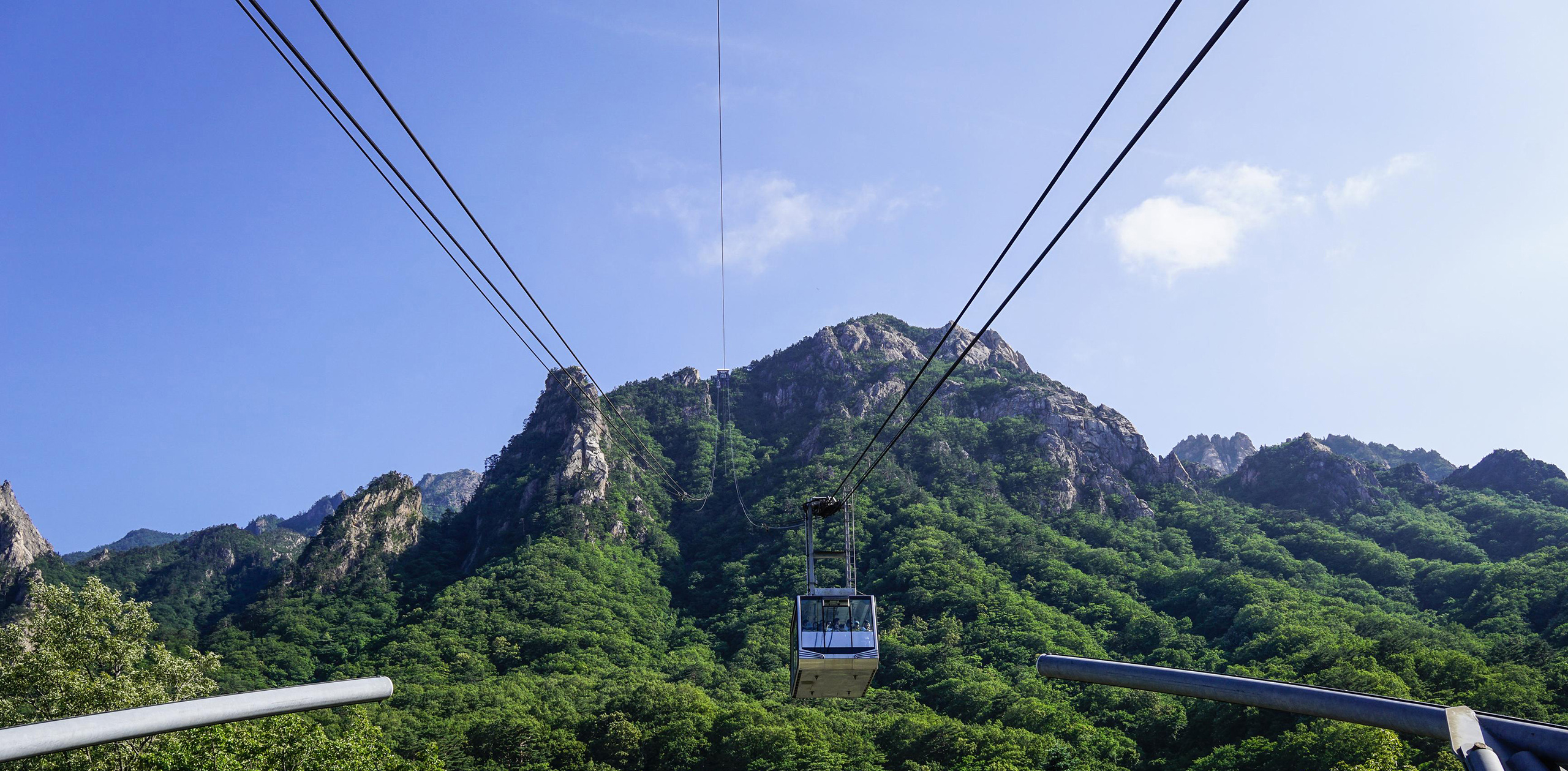
Seoraksan National Park
Given that three quarters of South Korea is covered by mountains, it’s both annoying and convenient that most of the best-looking ones have decided to huddle together in the same location, near the east coast – welcome to Seoraksan National Park, the answer to all your Korean hiking prayers.
Tucked up in the north-eastern corner of the country, Seoraksan National Park is Korea's most spectacular mountain area – and if you’ve got the energy, you’ll also find some of the loveliest hiking trails in the country here. The park is famed for its views, clear mountain streams and vibrant flora and fauna. In spring its slopes are covered in blossom and azaleas; later in the year, the cooler temperatures of autumn see the park blanketed with foliage of bright yellow and crimson red.
One of the highlights of the park is Sinheungsa, a humble yet riotously colourful temple just fifteen minutes on foot from the main park entrance along an easy, flattish trail. It was originally built in the seventh century, making it one of the oldest Zen temples in the world – though sadly it burned down numerous times over the years, so none of the buildings are original. You can’t miss its Great Unification Buddha, a giant statue representing the wish for South and North Korea to become one again.
Hiking trails fan out in all directions from the temple, though note that whichever way you head, they all slowly become steeper and steeper (and then, sometimes, steeper again). One popular target is Ulsanbawi, a distinctive bald ridge of granite to the north; to get here you’ll need to ascend metal stairways and cross don’t-look-down sky bridges.
Heading south instead from Sinheungsa, it’s possible to take the steep trail (or make use of a cable car) to the ruins of Gwongeumseong Fortress. The views from the peak here are superlative, though ardent hikers will see it as a mere steppingstone on the long haul further south to Daecheongbong, the highest peak in the park at 1,708 metres.
Temples, trails, maybe even a peak or two, and a feeling of invigoration – some time in Seoraksan will give you a window into Korea’s mountain life.


